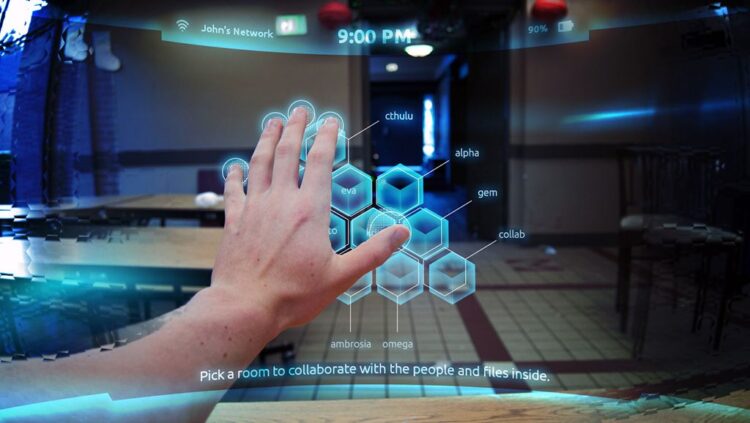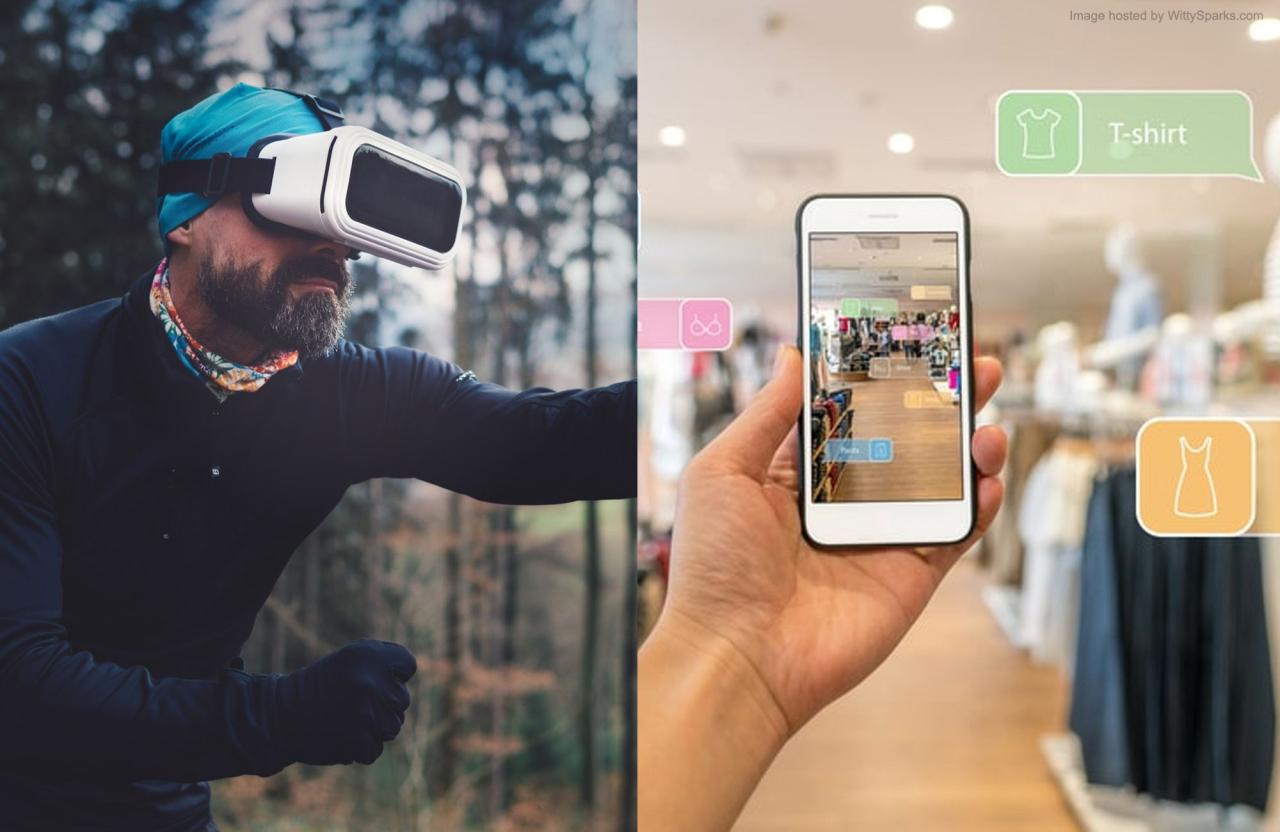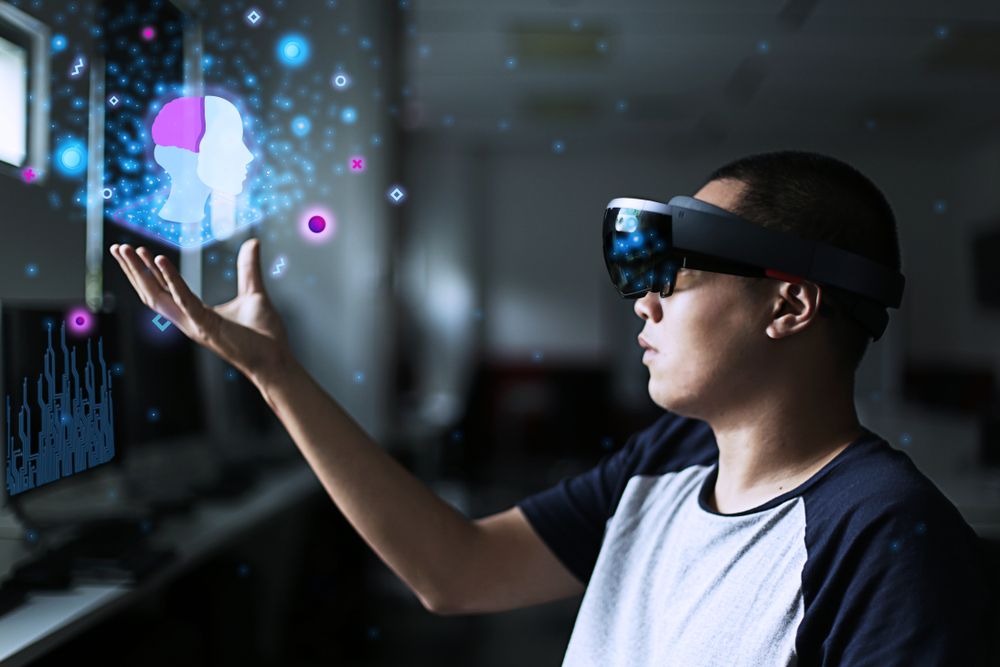The modern workplace, continuously evolving, seeks innovation to boost productivity, collaboration, and efficiency. Traditional screens and static information displays are slowly yielding to more immersive and intuitive interfaces. At the forefront of this shift lies Augmented Reality (AR) Kits, a revolutionary technology that overlays digital information onto our real-world view. Far from being a mere gimmick or entertainment tool, AR kits are transforming professional environments by providing workers with contextual data, interactive guides, and collaborative tools directly within their field of vision. This powerful integration of the physical and digital worlds promises unprecedented levels of precision, training effectiveness, remote assistance, and operational insight, truly enhancing workplace views and ushering in a new era of interactive productivity.
Beyond Flat Screens to Immersive Data
To truly grasp the significance and transformative power of AR kits in the workplace, it’s essential to understand the limitations of traditional digital interfaces and the compelling advantages of augmented reality.
A. The Constraints of Traditional Digital Interfaces
For decades, our interaction with digital information has been largely confined to flat, two-dimensional screens – computers, tablets, and smartphones. While these have revolutionized productivity, they present inherent limitations in many professional contexts.
- Contextual Disconnect: Information displayed on a separate screen often lacks direct context to the physical task at hand. Workers constantly switch their gaze between the real world (e.g., a complex machine) and the digital screen, leading to cognitive load, errors, and wasted time.
- Limited Immersion: Traditional interfaces keep digital content separate from the physical environment. This makes it challenging for workers to intuitively grasp complex 3D models, spatial relationships, or dynamic processes that unfold in the real world.
- Physical Limitations: Mobile devices require holding, which can occupy a worker’s hands, making two-handed tasks difficult or impossible while accessing information. Desktop computers tie workers to a fixed location, hindering mobility.
- Inefficient Information Delivery: For tasks requiring step-by-step guidance, workers might refer to paper manuals or separate digital documents, leading to slower execution and higher error rates, especially for intricate procedures.
- Remote Collaboration Gaps: While video conferencing helps, it still relies on flat screens and can’t fully convey the physical context of an issue, making remote assistance less effective for hands-on tasks.
B. The Promise of Augmented Reality
Augmented Reality (AR) offers a compelling solution to these challenges by seamlessly blending digital information with the real world. Unlike Virtual Reality (VR) which fully immerses users in a synthetic environment, AR enhances the real world.
- Contextual Information Overlay: AR kits enable digital content—such as schematics, performance data, step-by-step instructions, or 3D models—to be overlaid directly onto physical objects or environments. This provides immediate, relevant information precisely where and when it’s needed, eliminating the contextual disconnect.
- Hands-Free Operation: Many professional AR kits are head-mounted devices (HMDs), allowing workers to access digital information and interact with it using gestures, voice commands, or eye tracking, keeping their hands free for physical tasks.
- Enhanced Spatial Understanding: By presenting 3D digital objects within a real-world space, AR greatly improves a worker’s spatial understanding, making it easier to visualize complex assemblies, plan installations, or identify specific components.
- Immersive Training and Simulation: AR can create highly realistic, interactive training environments that simulate real-world scenarios without the risks or costs associated with physical training setups. Workers can practice complex procedures repeatedly in a safe, guided environment.
- Real-time Remote Assistance: Experts can virtually ‘see’ what a field worker sees through their AR device, annotate the shared view with digital instructions, or guide them through complex tasks remotely, significantly reducing travel time and improving first-time fix rates.
This seamless integration of the digital layer onto the physical world is fundamentally reshaping how professionals acquire, interact with, and leverage information in their daily operations.
Core Components and Functionalities of Professional AR Kits
A modern, professional-grade AR kit is a sophisticated piece of technology, comprising several interconnected components that enable its immersive and functional capabilities.
A. Head-Mounted Displays (HMDs)
The most common form factor for professional AR kits, HMDs are worn like glasses or goggles and serve as the primary interface.
- Optical System: This is crucial for projecting digital images onto the user’s field of view while allowing them to simultaneously see the real world. This can be achieved through various technologies like waveguide optics, reflective displays, or birdbath optics.
- Sensors: HMDs are equipped with a suite of sensors to understand the user’s environment and position:
- Cameras (RGB and Depth): For capturing the real world, recognizing objects, and creating 3D maps of the environment. Depth cameras are vital for understanding spatial relationships and occluding virtual objects behind real ones.
- Inertial Measurement Units (IMUs): Accelerometers, gyroscopes, and magnetometers track the user’s head movements, allowing digital content to remain spatially anchored in the real world.
- Microphones: For voice commands and real-time communication.
- Compute Unit: This can be either integrated into the HMD itself (standalone AR devices like Microsoft HoloLens 2, Magic Leap 2) or connected via a cable to a separate, pocket-sized computing pack. The compute unit processes sensor data, renders digital content, and runs applications.
- Battery: Powering the compute, displays, and sensors, battery life is a critical factor for usability in professional settings, often dictating the duration of a work shift.
B. Spatial Tracking and Environment Understanding
For AR content to appear stable and interact realistically with the real world, robust spatial tracking is indispensable.
- Simultaneous Localization and Mapping (SLAM): This core technology allows the AR device to build a 3D map of its environment while simultaneously tracking its own position within that map. This enables digital objects to stay fixed in space, even as the user moves.
- Object Recognition and Tracking: Using computer vision, AR systems can recognize specific physical objects (e.g., a particular machine part, a piece of equipment) and then overlay relevant digital information precisely onto them. This can be pre-trained or learned on the fly.
- Scene Understanding: Beyond mapping, advanced AR systems can understand the semantics of a scene (e.g., identifying walls, floors, tables), allowing digital content to interact more intelligently with the physical environment (e.g., a virtual robot walking on a real floor).
C. Interaction Modalities
How users interact with AR content is vital for hands-free productivity.
- Gesture Recognition: Hand gestures (e.g., air tapping, pinching, grabbing) allow users to select, manipulate, and interact with virtual objects.
- Voice Commands: Natural language processing allows users to control the AR interface and access information using voice, particularly useful in industrial settings where hands may be occupied.
- Eye Tracking: Monitoring the user’s gaze can be used for selection, navigation, or to understand what the user is focusing on, enabling more intuitive interactions.
- Physical Controllers: While many professional AR devices aim for hands-free, some use handheld controllers for specific tasks requiring fine manipulation or direct input.
D. Software Development Kits (SDKs) and Platforms
To create AR applications, developers rely on specialized SDKs and platforms.
- AR Frameworks: Tools like Unity’s AR Foundation, Unreal Engine’s AR features, Google ARCore, and Apple ARKit provide the foundational capabilities for AR development, abstracting away low-level sensor integration.
- Cloud Integration: Professional AR applications often connect to cloud platforms for data storage, analytics, AI processing (e.g., object recognition models), and remote collaboration services.
- Enterprise Application Integration: The ability to integrate AR applications with existing enterprise systems (e.g., ERP, CRM, CMMS, PLM) is crucial for pulling real-time operational data and pushing insights back into business workflows.
These components work in synergy to create an immersive, interactive, and intelligent experience, transforming how professionals work.
Transformative Advantages of AR Kits in the Workplace
The strategic adoption of AR kits offers a myriad of profound benefits that directly address critical challenges in various professional sectors, leading to unprecedented gains in productivity, safety, and operational excellence.
A. Significant Boost in Productivity and Efficiency
AR kits fundamentally change how workers access and utilize information, leading to substantial gains in efficiency.
- Contextual Information Access: Workers get critical data (e.g., machine performance, assembly instructions, wiring diagrams) overlaid directly onto the physical object they are working on, eliminating the need to look away at a separate screen or manual. This reduces context switching and errors.
- Hands-Free Operation: With hands-free access to information via voice commands, gestures, or eye tracking, workers can perform complex tasks without interruption, improving speed and reducing the time spent searching for or validating information.
- Streamlined Workflows: AR can guide workers step-by-step through complex procedures, providing visual cues and highlighting specific components, reducing decision fatigue and ensuring tasks are completed correctly the first time.
- Reduced Training Time and Costs: Immersive AR training allows new employees to learn complex tasks faster and more effectively, shortening onboarding periods and reducing the need for costly physical training equipment or travel for specialized instruction.
B. Enhanced Precision and Reduced Error Rates
The ability to overlay digital instructions and models with high accuracy significantly improves the quality of work.
- Visual Guidance for Complex Tasks: AR can project digital holograms of components onto an assembly area, showing exact placement and orientation, ensuring precise assembly or repair. This is invaluable in manufacturing or aerospace.
- Error Prevention: By visually highlighting correct steps or warning about incorrect actions, AR acts as a ‘digital guardian,’ preventing common human errors in critical tasks.
- Real-time Feedback: AR systems can provide instant feedback on whether a step has been completed correctly, or if a measurement is within tolerance, allowing for immediate correction.
- Improved Quality Control: AR can assist quality inspectors by overlaying digital checklists, highlighting deviations, or comparing as-built structures with digital blueprints with high accuracy.
C. Revolutionized Training and Skill Development
AR provides a powerful, immersive, and safe environment for learning and developing new skills, particularly for complex and high-risk operations.
- Experiential Learning: Trainees can learn by ‘doing’ in a simulated environment that mirrors the real world, allowing them to practice complex procedures repeatedly without consuming actual resources or risking damage to expensive equipment.
- Safety in Training: For hazardous tasks (e.g., working with high voltage, chemical spills), AR simulations allow workers to practice emergency procedures safely, building muscle memory and confidence without exposure to real danger.
- On-Demand Knowledge Transfer: Experienced workers can create AR-powered training modules by performing a task while their movements and verbal instructions are recorded and converted into interactive guides for new hires. This captures valuable tacit knowledge.
- Personalized Learning Paths: AR training can adapt to an individual’s progress and learning style, providing personalized guidance and additional practice where needed.
D. Empowered Remote Assistance and Collaboration
AR significantly bridges the gap for remote collaboration, especially for hands-on, spatially dependent tasks.
- ‘See What I See’ Capabilities: A field technician wearing an AR headset can share their live, real-world view with a remote expert. The expert can then annotate this shared view with digital drawings, arrows, or text, guiding the technician in real-time.
- Reduced Travel Costs and Time: Remote experts can provide support to multiple sites globally without needing to travel, saving significant time and expenses, and improving response times for critical issues.
- Improved First-Time Fix Rates: With direct, visual guidance from an expert, field workers are more likely to correctly diagnose and fix issues on the first attempt, reducing repeat visits and associated costs.
- Collaborative Design Review: Teams in different physical locations can jointly review 3D models of products or buildings as holographic overlays in their shared physical space, facilitating more intuitive design discussions.
E. Enhanced Safety and Risk Mitigation
By providing critical information and guiding workers, AR can significantly reduce workplace accidents and enhance overall safety protocols.
- Hazard Identification: AR can overlay warnings about live electrical circuits, gas leaks, or unsafe zones directly into a worker’s view.
- Procedural Compliance: By guiding workers step-by-step through safety-critical procedures, AR ensures that all necessary safety checks are performed correctly and in order.
- Situational Awareness: For supervisors or emergency responders, AR can display real-time sensor data, location of personnel, or critical infrastructure information, enhancing their situational awareness in complex or dangerous environments.
- Simulated Emergency Response: Training for emergency procedures in AR allows workers to practice responses to fires, chemical spills, or evacuations without putting lives at risk.
Key Industries and Promising Use Cases for AR Kits
The versatility and transformative benefits of AR kits mean they are finding increasingly vital applications across a wide array of professional sectors, each leveraging its unique capabilities.
A. Manufacturing and Assembly
Manufacturing is a prime industry for AR adoption, enhancing assembly, quality control, and maintenance of complex machinery.
- Complex Assembly Guidance: Workers wear AR glasses to see holographic instructions overlaid onto products, showing precise screw locations, cable routing, or part placement for intricate assemblies (e.g., aerospace engines, automotive parts).
- Quality Assurance and Inspection: Inspectors use AR to overlay digital checklists, compare manufactured parts against CAD models for deviations, or highlight potential defects in real-time.
- Machine Maintenance and Repair: Technicians receive guided troubleshooting steps, interactive schematics, or remote expert assistance directly in their field of view while working on complex industrial machinery.
- Operator Training: Onboarding new factory workers or training existing ones on new equipment through immersive, interactive AR simulations that reduce errors and speed up learning.
B. Field Service and Remote Support
AR kits are revolutionizing how field technicians diagnose and resolve issues in remote locations.
- Remote Expert Guidance: A remote expert annotates the field technician’s view in real-time with digital instructions, guiding them through complex repairs of anything from HVAC systems to wind turbines.
- Automated Troubleshooting Steps: Technicians follow AR-guided workflows for standard diagnostic procedures, ensuring all steps are covered and reducing the need for extensive prior knowledge.
- Equipment Identification: AR can recognize equipment models and instantly pull up relevant manuals, past service history, or replacement part numbers.
- Pre-site Surveys: Field workers can capture 3D scans of a site and share them with engineers remotely to plan installations more accurately.
C. Healthcare and Medicine
AR is increasingly being explored for medical training, surgical assistance, and patient care.
- Surgical Pre-planning and Guidance: Surgeons can overlay 3D anatomical models (from CT/MRI scans) onto a patient during surgery, providing enhanced visualization and precision.
- Medical Training: Medical students can practice complex procedures (e.g., intubation, venipuncture) on AR-enhanced mannequins or virtual patients, gaining hands-on experience in a safe environment.
- Patient Education: Doctors can use AR to explain complex medical conditions to patients by showing 3D anatomical overlays.
- Remote Consultations: Specialists can virtually ‘see’ and guide care in remote or underserved areas.
D. Architecture, Engineering, and Construction (AEC)
AR is transforming how AEC professionals visualize, plan, and execute projects.
- On-Site Design Visualization: Architects can overlay 3D building models (BIM data) onto a construction site, allowing clients and contractors to walk through the future building in its actual location before it’s built.
- Construction Progress Monitoring: Overlaying scheduled progress with actual progress to identify deviations or clashes in real-time on the job site.
- Hidden Infrastructure Visualization: Displaying the location of underground pipes, electrical conduits, or structural elements that are hidden behind walls or beneath the ground.
- Safety Compliance: Highlighting potential hazards or no-go zones on a construction site for worker safety.
E. Logistics and Warehousing
AR is improving efficiency in supply chain and inventory management.
- Pick-by-Vision: Warehouse workers wear AR glasses that highlight the exact location of items to pick, display quantities, and optimize picking routes, significantly speeding up order fulfillment and reducing errors.
- Inventory Management: Real-time information on stock levels, item locations, and reorder points directly in the worker’s view.
- Loading Optimization: Guiding workers on the most efficient way to load trucks or containers to maximize space utilization.
- Training for New Layouts: Training workers on new warehouse layouts or processes through interactive visual guides.
Implementing AR Kits in the Workplace: A Strategic Roadmap
Deploying effective AR solutions in professional environments requires a strategic and phased approach, moving beyond simple demonstrations to scalable, integrated solutions.
A. Define Clear Business Goals and Use Cases
Before investing in hardware, it’s crucial to clearly identify the specific business problems you want to solve with AR and define measurable outcomes. Avoid adopting AR just because it’s new. Focus on questions like:
- Can AR reduce equipment downtime by X%?
- Can it cut training time for new hires by Y%?
- Can it improve first-time fix rates for field service by Z%? Start with one or two high-impact pilot projects that demonstrate clear ROI, which helps build internal champions and secures further investment.
B. Choose the Right Hardware and Platform
The market for professional AR hardware is maturing, but choices vary in terms of capabilities, comfort, and cost.
- Form Factor: Consider standalone HMDs (e.g., Microsoft HoloLens 2, Magic Leap 2) for complex, mobile tasks, or assisted reality smart glasses (e.g., Vuzix, RealWear) for simpler information display and remote assistance in harsh environments.
- Field of View (FOV): A wider FOV provides a more immersive experience but can be more expensive.
- Spatial Tracking Accuracy: Crucial for precise overlays.
- Compute Power and Battery Life: Ensure it’s sufficient for your application needs and shift duration.
- Ecosystem and SDKs: Evaluate the availability of robust SDKs, developer community support, and integration with cloud services.
C. Develop and Integrate Targeted Applications
Developing AR applications often requires specialized skills.
- Focus on User Experience (UX): AR UX is different from 2D screens. Design intuitive interfaces that minimize cognitive load, use natural interaction methods (voice, gesture), and provide clear, concise information.
- Integrate with Enterprise Systems: For real-time data, AR apps must seamlessly connect with existing enterprise systems (ERP, CMMS, IoT platforms, CAD/BIM systems). This requires robust APIs and data synchronization strategies.
- Leverage Cloud Services: Utilize cloud computing for backend processing, data storage, AI model training (e.g., for object recognition), and remote collaboration functionalities.
- Iterative Development: Adopt an agile approach, releasing minimum viable products (MVPs) and continuously iterating based on user feedback from pilot projects.
D. Ensure Robust Connectivity and Security
AR devices rely heavily on connectivity and require stringent security measures.
- Network Infrastructure: Ensure robust Wi-Fi or 5G coverage in operational areas for reliable data streaming. For remote field service, consider devices with cellular connectivity.
- Data Security: Implement end-to-end encryption for all data transmitted between the AR device, cloud, and enterprise systems.
- Access Control: Use granular Identity and Access Management (IAM) to control who can access specific AR applications and what data they can view or modify.
- Device Management: Implement mobile device management (MDM) solutions for AR headsets to manage updates, security policies, and application deployment.
E. Implement Comprehensive Training and Change Management
Technology adoption is primarily about people.
- Pilot Programs and Champions: Start with enthusiastic early adopters and designate them as internal champions to demonstrate success and guide others.
- Structured Training: Provide clear, hands-on training for workers on how to use the AR devices and applications effectively and safely.
- Address Concerns: Be transparent about the purpose of AR (e.g., to augment, not replace, jobs) and address any fears or resistance through open communication and clear demonstrations of benefits.
- Iterative Feedback: Establish feedback loops from users to developers to continuously improve the AR applications based on real-world usage.
F. Measure ROI and Scale Systematically
Continuously monitor the impact of AR solutions against your initial business goals.
- Key Performance Indicators (KPIs): Track metrics such as reduction in errors, decrease in training time, improvement in first-time fix rates, or increase in throughput.
- Cost-Benefit Analysis: Regularly evaluate the financial returns against the investment.
- Phased Rollout: Once proven, systematically scale the AR deployment to more teams, departments, or locations, ensuring lessons learned from pilots are incorporated.
The Future Trajectory of AR Kits in the Workplace
The journey of AR in the workplace is just beginning, with rapid advancements expected across hardware, software, and integration capabilities.
A. More Compact, Comfortable, and Powerful Hardware
Future AR kits will become significantly more user-friendly.
- Sleeker Form Factors: AR glasses will resemble regular eyewear, becoming lighter, smaller, and more fashionable, reducing user fatigue and increasing adoption.
- Improved Field of View (FOV): Wider and more immersive FOVs will become standard, enhancing the sense of presence and utility.
- Higher Resolution and Brighter Displays: Digital content will appear sharper, clearer, and more vibrant, even in bright outdoor environments.
- On-Device AI and Edge Computing: More powerful processors and specialized AI chips integrated directly into the HMDs will enable complex real-time processing and AI models to run locally, reducing latency and reliance on cloud connectivity.
B. Hyper-Contextual AI and Predictive Assistance
The integration of AI will make AR even more intelligent and proactive.
- Predictive Maintenance Overlays: AI will analyze real-time machine data and proactively highlight components likely to fail, guiding workers to inspect or replace them before an actual breakdown.
- Personalized Workflows: AI will learn individual worker preferences and skill levels, adapting AR guidance to provide personalized instructions and support.
- Voice AI and Natural Language Understanding: More sophisticated voice interfaces will allow for natural conversational interactions, making it easier for workers to ask questions and receive instant, contextual answers.
- Generative AI for Content Creation: AI will be able to automatically generate AR training content, repair guides, or assembly instructions from existing CAD models, manuals, and operational data, dramatically speeding up content creation.
C. Seamless Integration with Digital Twins
The synergy between AR and Digital Twin technology will become a powerful force.
- Live Digital Twin Visualization: Workers will be able to visualize real-time Digital Twin data (e.g., temperature, pressure, historical performance) overlaid onto the actual physical asset in their field of view.
- Interactive Simulations on Physical Assets: The AR device could allow workers to virtually ‘test’ a repair or a new configuration on the Digital Twin of a machine, seeing the simulated outcome overlaid on the physical machine before making any real-world changes.
- Remote Control and Teleoperation: AR interfaces will enable remote operators to visualize and directly control robots or machinery in distant locations, using the Digital Twin as their primary interface.
D. Enterprise-Scale Deployment and Management Tools
As AR adoption grows, the ecosystem of tools for managing large-scale deployments will mature.
- Robust Device Management: More comprehensive MDM solutions specifically for AR headsets, covering over-the-air updates, security policies, app distribution, and remote diagnostics.
- Content Management Systems (CMS) for AR: Streamlined platforms for creating, managing, and distributing AR content across diverse teams and devices.
- Analytics and ROI Tracking: Advanced dashboards and analytics tools to measure the effectiveness of AR deployments and calculate ROI at scale.
- Interoperability Standards: Growing industry efforts to establish standards for AR content, data exchange, and device compatibility will reduce fragmentation and facilitate broader adoption.
E. Extended Reality (XR) Convergence
The lines between AR, VR, and Mixed Reality (MR) will continue to blur, leading to more versatile Extended Reality (XR) devices. These devices will seamlessly transition between fully immersive VR experiences (for isolated training or design reviews) and AR overlays (for hands-on tasks), offering the best of both worlds within a single platform.
Conclusion
Augmented Reality Kits are poised to fundamentally redefine the modern workplace, moving us beyond the limitations of flat screens to a world where digital information is seamlessly integrated into our physical reality. By providing contextual data, interactive guidance, and powerful collaboration tools directly within a worker’s field of vision, AR promises to unlock unprecedented levels of efficiency, precision, safety, and learning effectiveness.
While challenges remain in hardware development, software integration, and workforce adaptation, the transformative benefits are too compelling to ignore. From revolutionizing manufacturing assembly lines and empowering remote field service technicians to enhancing surgical procedures and streamlining urban planning, AR kits are proving their value across diverse industries. As this technology continues to mature, becoming more compact, intelligent, and integrated with other cutting-edge solutions like Digital Twins and AI, it will solidify its position as an indispensable tool for the future of work. Businesses that strategically embrace and invest in AR kits are not just adopting a new gadget; they are investing in a future where workers are empowered with superhuman capabilities, truly enhancing every workplace view and driving a new era of interactive productivity and innovation.











